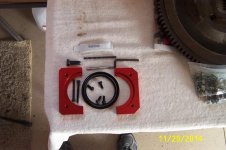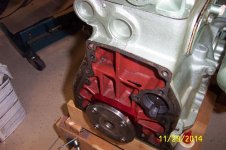Offline
My understanding is the Healey has a reverse archimedian screw in a bore. Like a meat grinder in reverse. The "threads" move in a reverse direction, in theory always pushing any oil overflow back toward the crankcase.
Totally correct and reminds me of my Lithuanian grammy making kielbasa with a side of fresh ground horseradish. It was all about the Archimedes screw meat grinder.

 Hi Guest!
Hi Guest!

 smilie in place of the real @
smilie in place of the real @
 Pretty Please - add it to our Events forum(s) and add to the calendar! >>
Pretty Please - add it to our Events forum(s) and add to the calendar! >> 



